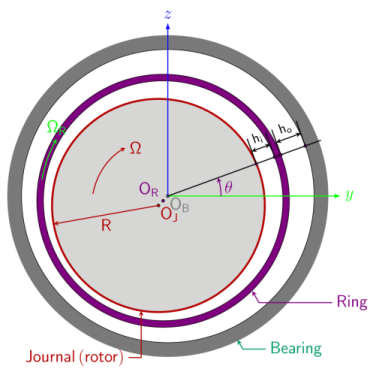Reynolds Equation for the floating ring bearing takes the following form in the ring reference frame:
where h is the film thickness and
vavg is the average velocity in the film. Expressions for film thickness and average velocity in both films are given below.
ρ and
μ are the density and viscosity of the lubricant, respectively.
vj,
vr and
vb are the velocities of the journal, ring and bushing, respectively, measured in the ring reference frame and are given by
